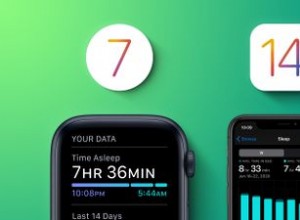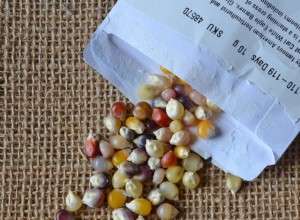إن تطوير العقلية الصحيحة في وقت مبكر أمر بالغ الأهمية لحياة سعيدة وناجحة. عندما يتعلم الأطفال بذل الجهد واستخدام الاستراتيجيات الصحيحة يمكن أن يساعدهم على التحسن في الأشياء ، فإنهم يشعرون بالقوة ويحاولون بجد أكبر. عندما يعرفون أن أدمغتهم قادرة على النمو ، فإنهم يكونون أكثر ثقة ومرونة ولا يخشون الفشل!
قبل المتابعة ، اعتقدنا أنك قد ترغب في تنزيل مجموعة Your Words Matter Volume 2 المجانية. من خلال هذه الإرشادات العشرة حول الأبوة والأمومة المكونة من صفحة واحدة ، ستعرف بالضبط كيفية التحدث إلى طفلك لمساعدته على الدفاع عن نفسه ، وزيادة الثقة به ، وتطوير عقلية النمو.
ما المقصود بمفهوم النمو؟
لدينا جميعًا معتقدات حول قدراتنا وإمكاناتنا. هذه المعتقدات هي جزء من عقليتنا ، وهي قوية لدرجة أنها يمكن أن تغذي سلوكنا وتتنبأ بنجاحنا. تشكل العقلية حياتنا اليومية ، وتساعدنا على تفسير تجاربنا وإمكانياتنا المستقبلية.
في بحثها في جامعة ستانفورد ، حددت الدكتورة كارول دويك نوعين مختلفين من العقليات. نمو عقلية يحدث عندما نعتقد أنه يمكن تحسين ذكائنا وقدراتنا بالجهد والاستراتيجيات الصحيحة.
إن الاستعداد لمواجهة التحديات ، والشغف بالتعلم ، والنظر إلى الفشل كنقطة انطلاق للنمو ، كلها خصائص مرتبطة بعقلية النمو. ليس من المستغرب أن يرتبط هذا النوع من العقلية بقوة بزيادة السعادة والإنجاز في الحياة.
في المقابل ، أولئك الذين لديهم عقلية ثابتة يعتقدون أن ذكائهم وقدراتهم لا يمكن تغييرها بطريقة هادفة. نتيجة لذلك ، غالبًا ما يُنظر إلى الأخطاء على أنها إخفاقات وليست فرصًا للنمو والتعلم. عندما تكون عالقًا في عقلية ثابتة ، قد نخشى التجارب الجديدة ، ونتجنب المخاطر ، ونشعر بالحاجة إلى إثبات أنفسنا مرارًا وتكرارًا.
كيفية استخدام هذا الدليل
إن تعليم عقلية النمو للأطفال ليس بالمهمة السهلة ولكنها قد تصبح واحدة من أعظم المساهمات التي تقدمها نحو نجاحهم وسعادتهم.
في هذا الدليل الذي يستغرق 4 أسابيع ، ستجد العناصر الأساسية لتأسيس عقلية النمو في المنزل أو في الفصل الدراسي الخاص بك. يقدم كل أسبوع مجموعة متنوعة من الأنشطة والموارد المقترحة ، بالإضافة إلى النصوص المقترحة لتسهيل المناقشات السهلة والممتعة مع طفلك أو الطلاب.
3 خطوات لتحقيق أكبر قدر من هذا الدليل
- التحضير. يمكن لبعض التخطيط السهل أن يفعل العجائب لخلق جو مريح. تأكد من أن لديك الموارد الموصى بها قبل أن تبدأ. على الرغم من أنها ليست مطلوبة ، فهي مصممة لجعل هذه العملية أسهل بكثير وأكثر متعة للأطفال.
- خصص الوقت. سيسمح الوقت المخصص للأنشطة المقترحة للأطفال بعدم الشعور بالاندفاع. يمكن لبضع دقائق في اليوم أن تحدث فرقًا كبيرًا.
- أثار فضولهم. عندما تُظهر حماسة بشأن تعلم هذا المفهوم الجديد ، سيشعر الأطفال بالفضول وسيرغبون في معرفة السبب.
ماذا تفعل بعد هذا الدليل
يعد تطوير عقلية النمو رحلة مدى الحياة ، وقد تم تصميم هذا الدليل لمساعدتك على البدء. عندما تكمل هذا البرنامج الذي يستغرق 4 أسابيع ، استمر في تنفيذ كل ما تعلمته في الأسبوعين الثالث والرابع. بالإضافة إلى ذلك ، يمكن لطفلك أو طلابك الاستمرار في العمل على Big Life Journal والاستماع إلى بودكاست Big Life Kids واستخدام Free Friday Printables.
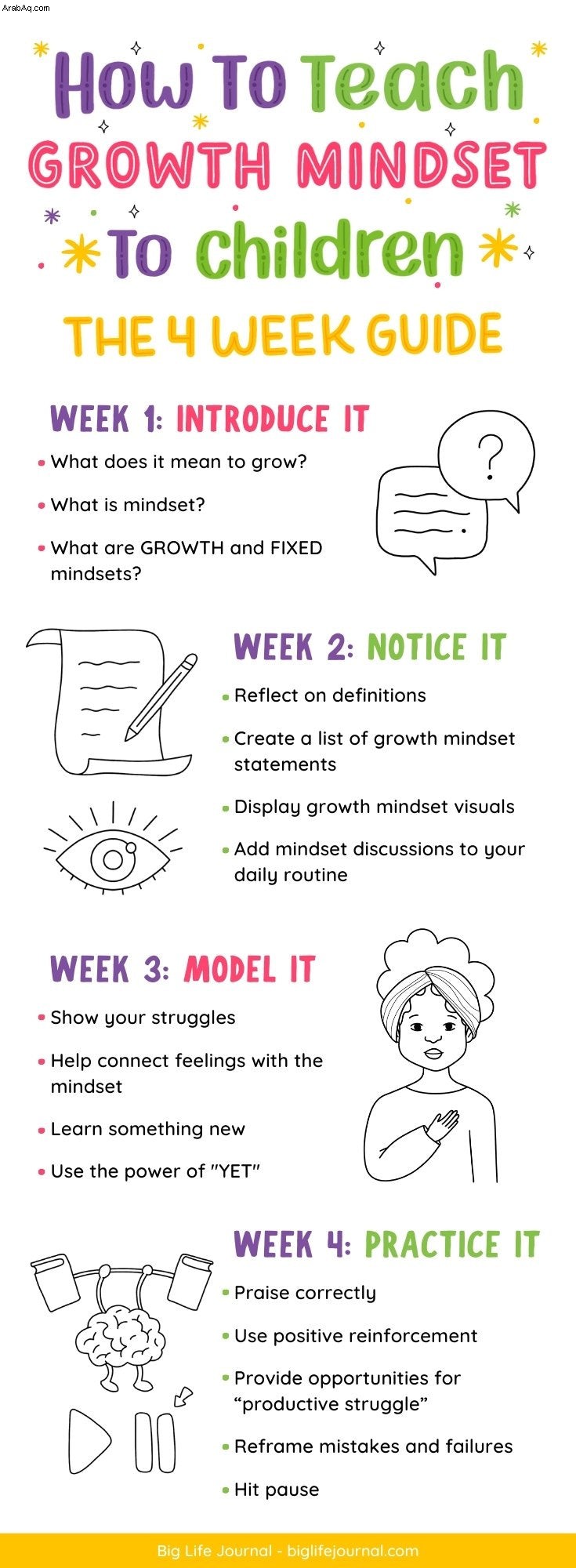
الأسبوع الأول:تقديمه
سيتعرف الأطفال هذا الأسبوع على مفاهيم العقلية وكيف يختلف النوعان ، النمو والثابت. ستناقش أيضًا الدماغ وكيف يمكن أن ينمو ويتقوى استجابة للتحديات.
أثناء تقديمك لهذه الأفكار الجديدة ، فإن الحفاظ على اللهجة والضوء سيقطع شوطًا طويلاً نحو إشراك الأطفال.
الخطوة الأولى:بناء الأساس
قم بإجراء مناقشة مع العائلة أو الفصل الدراسي حول الأسئلة التالية:
-
ماذا يعني أن تنمو؟ ما أنواع الأشياء التي تنمو؟ الأجوبة ستختلف. النمو يعني التطور والتغيير والنضج والتطور. تنمو الكائنات الحية - النباتات والحيوانات والأشخاص. حتى عقولنا يمكن أن تنمو!
-
عندما تفكر في العقل أو العقول ، ماذا تعتقد أن العقلية تعني؟ العقلية هي الطريقة التي يدرك بها دماغنا أنفسنا والعالم. تساعدنا طريقة تفكيرنا على النظر إلى المشاكل والأخطاء بطريقة إيجابية!
-
دعونا نجمع هذه الكلمات معًا:النمو والعقلية. عندما نجمعها ، فهذا يعني شيئًا مهمًا حقًا. ماذا يمكن أن تعني عقلية النمو؟ عقلية النمو تؤمن بقوة نفسك وعقلك! نحن نعلم أن عقولنا وقدراتنا تتطور عندما نجرب أشياء صعبة ، ونستخدم الاستراتيجيات الصحيحة ، ولا نستسلم. لذا فإن عقلية النمو هي عندما نعلم ، من خلال الممارسة ، أننا سنتحسن في شيء ما.
-
إذا كان الإصلاح هو عكس النمو ، ماذا يعني أن يكون لديك عقلية ثابتة؟ تعني العقلية الثابتة أنك تعتقد أنه لا يمكنك التحسن في الأشياء ، حتى لو كنت تمارس. إن الرغبة في الإقلاع عن التدخين أو الاستسلام أو اتخاذ قرار بأننا لا نجيد شيئًا ما كلها أدلة على أن لدينا عقلية ثابتة.
استخدم مخطط العقلية هذا لتوضيح ومناقشة الاختلافات بين العقليتين.
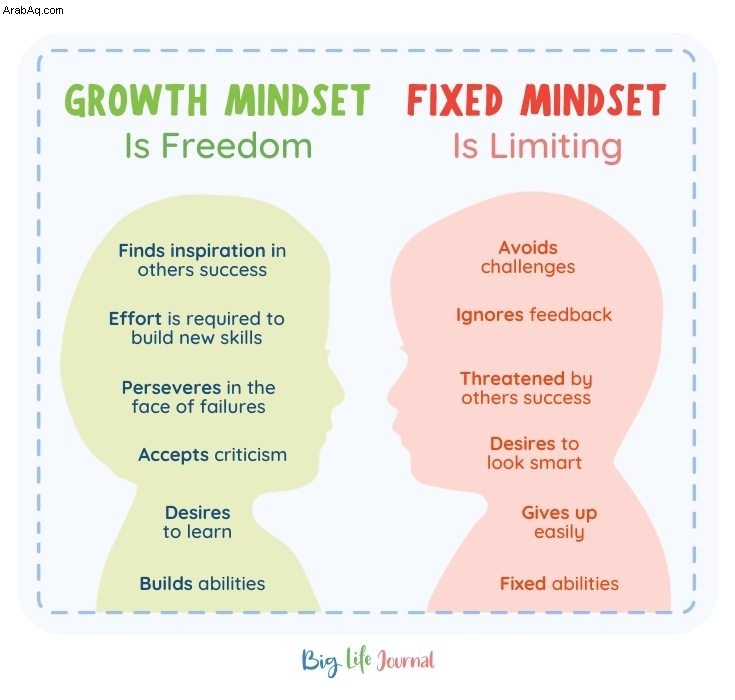
استخدم النص المقترح أدناه لمناقشة العقلية.
الخطوة الثانية:مشاركة أمثلة من حياتك الخاصة
شارك قصة شخصية عن الوقت الذي كنت فيه عالقًا واستخدمت العمل الجاد و / أو مساعدة الآخرين للتغلب على التحدي.
اطلب من طفلك أو صفك مشاركة أمثلة مماثلة من حياتهم. في حجرة الدراسة ، يمكن القيام بذلك مع الجميع معًا أو في مجموعات أصغر. استخدم " بطاقات رحلة عقلي " قابلة للطباعة (مجموعة Growth Mindset Printables) كنشاط ممتع للأطفال لقياس فهمهم لنوعين من العقلية.
الخطوة الثالثة:ناقش قوة الدماغ
ناقش الدماغ وقدرته الرائعة على التغيير والنمو. استخدم النص المقترح أدناه.
استخدم ملصق "بناء عقلية نمو" (Growth Mindset Printables Kit) لهذه الخطوة. إنه نشاط رائع للأطفال لمعرفة المزيد حول كيفية عمل عقولهم وممارسة إبداعهم.
الموارد المقترحة للأسبوع الأول:
- ملصق عقلية النمو (PDF) يمكن أن يكون بمثابة بيان ملهم لعقلية النمو.
- " بناء عقلية النمو " يُعد Poster (Growth Mindset Printables Kit) نشاطًا ممتعًا حيث يتعلم الأطفال عن قوة عقولهم.
- بطاقات رحلة عقلي (مجموعة Growth Mindset Printables Kit) ستساعد في تعليم الفرق بين العقلية الثابتة وعقلية النمو باستخدام بطاقات تذكير يومية ممتعة.
- بيغ لايف جورنال (من سن 7-10). استخدم الفصل الأول "آمن بنفسك" لمناقشة كيف يمكن لأفكارك وحديثك الذاتي أن يؤثر على عقلك.
- برنامج Big Life Kids Podcast هو بودكاست عقلية النمو للأطفال ، والذي يصاحب مجلة Big Life Journal - الإصدار الثاني. الاستماع إلى الحلقات 1 و 2.
- دليل الوالدين لتنمية عقلية النمو (مجموعة Growth Mindset Printables Kit) توفر أمثلة محددة لما يجب قوله وطلب مساعدة أطفالك على تطوير عقلية النمو.
اقرأ
- الدماغ المرن الرائع بواسطة JoAnn Deak (من 4 إلى 8 سنوات)
- الدليل النهائي لمدح أطفالك (مقال للكبار)
- كيفية شرح عقلية النمو للأطفال:أنشطة المرونة العصبية (مقال للكبار)
- المخ مثل العضلات (مقال للبالغين والأطفال الأكبر سنًا)
مشاهدة
- Growth Mindset Video (2.5 minutes)
- Learning and the Brain (3 minutes)
WEEK TWO:NOTICE IT
This week, you begin to identify growth and fixed mindsets in ourselves and others. Everywhere you look, you can find examples of others either quitting or overcoming their challenges.
Step 1:Reflecting on Definitions
Go back to the definitions of growth and fixed mindset from Week One. Did anyone notice a time they were using either mindset? Discuss how we can change from a fixed to a growth mindset with simple words and phrases.
Use the suggested script below.
This week, complete the 5-Day Growth Mindset Challenge (Challenges Kit) to help children solidify the concepts (join them as their challenge buddy). Designed for all learning styles, this challenge includes fun activities such as matching games, word search, and filling in the blanks.
Step 2:Practice Switching from a Fixed to Growth Mindset
Ask your child/class to think of some FIXED mindset phrases commonly used at home or anywhere else (“I am not good at this”, “I can’t do anything right”), and write them down.
Next, create a list of alternate phrases that reflect a growth mindset (“I’m not good at this yet”). Above the fixed mindset column, write “Instead of” and on the Growth mindset column, “I Can Say…”
Use the suggested script below.
Use the My Growth Mindset Statements printable (Growth Mindset Printables Kit) as a guide for this step. Cover the area under “I Can Say” and only show underneath where it says “Instead of.”
Ask your children how they can change each statement from negative to empowering. For example, you could ask, “What is a better way of looking at a situation?”
Step 3:Display Visuals as Everyday Reminders
Display visuals around your home/classroom as regular reminders of new vocabulary and ideas. Have the child/class locate their favorite spots to hang posters and refer to them frequently throughout the day.
Then, when you hear a child making a fixed mindset statement, you can simply point to a poster and have them read it (or read together).
You can use our printable Inspirational Posters Bundle (PDF) . A convenient bundle of inspiring posters with growth mindset messages for kids, tweens, and teens.
Step 4:Discuss How Growth Mindset Looks, Feels, and Sounds
Set aside at least several minutes to discuss how growth mindset can be easily included in your everyday lives.
Use the What Success Really Takes poster (Growth Mindset Printables Kit) to remind your family or class that success is like an iceberg. Most people only see the great outcome, the tip of the iceberg. But, what success really takes lies beneath the surface. Use the blank poster to write everything your child is working on to help them achieve their goals.
In school :Consider how growth mindset LOOKS, FEELS, and SOUNDS in class and use the printables Growth Mindset A-Z Poster (Growth Mindset Printables Kit) to write down everyone’s ideas. Make Growth Mindset Guide one of your classroom jobs.
Step 5:Use Book Characters
Identify growth and fixed mindsets in favorite books characters. Pay attention to how the characters FEEL depending on their mindset and discuss ways persistence, love of learning, and resilience are portrayed.
Point out when a character shifts from a fixed to a growth mindset too.
Use the suggested script below.
Make the Growth Mindset Bookmarks (Growth Mindset Printables Kit) as a fun activity for children to practice noticing growth mindset characters in books.
Suggested Resources for Week Two:
- 5-Day Growth Mindset Challenge (Challenges Kit) will help your child practice growth mindset concepts and vocabulary.
- Inspirational Posters can be hung up in a bedroom or a classroom.
- My Growth Mindset Statements (Growth Mindset Printables Kit)
- What Success Really Takes (Growth Mindset Printables Kit)
- Growth Mindset Bookmarks Activity (Growth Mindset Printables Kit)
- Big Life Journal - use chapter two “Mistakes Help You Grow” to discuss how mistakes are just opportunities to learn and grow.
- Big Life Kids Podcast - listen to episodes 3 and 5 (they accompany chapter two of the Big Life Journal).
READ
- Top 85 Growth Mindset Books is a list of our favorite and most popular books for you and your children!
- Empowering Self-Confidence Affirmations
WATCH
- Top 50 Growth Mindset Movies for Children is a list of good movies with characters who demonstrate a growth mindset, grit, perseverance, courage, and determination.
WEEK THREE:MODEL IT
Your ability to MODEL a growth mindset can make the difference between a child understanding the concept and actually living it. Let them see your growth mindset in action.
Step 1: Share Your Experiences
Be honest when something is difficult for you. Tell children when you’re discouraged, share your fixed mindset thoughts, and brainstorm solutions out loud. Show them we’re ALL learning this growth mindset thing together!
The Big Life Journal Daily Edition is a great connection tool which provides opportunities for discussions and experience sharing.
Use the What Happens When Someone Has a Growth Mindset poster (Growth Mindset Printables Kit) to discuss which of the benefits you have already experienced yourself since you began your growth mindset journey.
Step 2:Discuss Feelings
Discuss how positive feelings such as satisfaction, contentment, and happiness come from persisting through challenges and not giving up when it gets difficult.
When stuck in a fixed mindset, share how you felt sad, anxious, or even hopeless. Negative feelings happen to everyone and are perfectly normal. At the same time, they may serve as clues you need to shift your thinking and attitude.
You can use the Feelings Bingo (Emotional Intelligence Kit). A fun spin on a classic all-time favorite game! Use the Feelings Spinner to play with the bingo. The Feelings Ice Cream poster will help you identify similar feelings so you can cross them out and win the game.
Step 3:Set a New Goal
Set a personal goal to learn something new and share your learning process with your child or students. How did you feel at the start? What can you do to be certain you don’t give up before achieving it? Review ways children can set and meet their own goals.
Step 4:Use the Power of Yet
With one simple word, any fixed mindset phrase can be transformed into a statement of hope. “I can’t do this...yet.” It’s all about the FUTURE, and not giving up until we get there.
Make a “YET” bulletin board or designate a wall at home for all the things you can’t do...yet!
Use the suggested script below.
Suggested Resources for Week Three:
- What Happens When Someone Has a Growth Mindset poste r (Growth Mindset Printables Kit)
- Feelings Bingo (Emotional Intelligence Kit)
- Famous Failures Kit is a set of stories highlighting famous people from around the world who have failed and struggled on their way to success.
- Big Life Journal - use chapter three “Be Persistent” to discuss how sometimes we just need to give our brain enough time to learn new things.
- Big Life Kids Podcast - listen to episodes 5 and 6 (they accompany chapter three of the Big Life Journal)
READ
- Not Yet by Lisa Cox (ages 4-8)
- Flight School by Lita Judge (ages 4-8)
WATCH
- Janelle Monae “The Power of Yet” (Sesame Street, 2015) (2.5 minutes)
- C.J. Luckey - The Power of Yet by Andre Kahmeyer (4 minutes)
WEEK FOUR:PRACTICE IT
Having a growth mindset is all about effort, so what better way to teach it than through practice, practice, practice?
Step 1:Praise for a Growth Mindset
Praise for perseverance in problem-solving rather than being smart or talented. Connect positive results with effort rather than innate ability, and children will be more willing to take risks and value working hard. When you notice hard work or positive self-talk, make sure you tell them!
If you need some ideas on what to say, download our FREE Your Words Matter Kit . من خلال هذه الأدلة العشرة الشهيرة حول الأبوة والأمومة ، ستعرف بالضبط كيفية التحدث إلى أطفالك لمساعدتهم على تنمية الثقة ، والتحفيز الداخلي ، وموقف ما يمكن فعله.
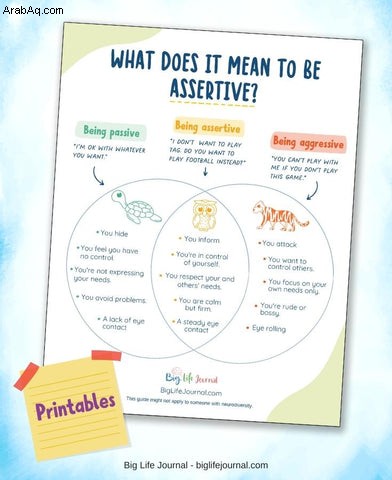
Step 2:Make It a Game
Introduce various games like the " Mystery Fun Game” (Growth Mindset Printables Kit) to make the learning fun.
Print out the Mystery Fun poster and write a mystery prize or activity on it (a trip to the zoo, favorite breakfast, popcorn party, etc.)
Next, cut out the growth mindset task squares ("Celebrated a mistake", "Used a YET!") and tape them over the mystery prize. Whenever someone completes a growth mindset task, remove a square.
When all the squares have been removed and the mystery prize is revealed -- it's time to celebrate!
Step 3:Encourage Productive Struggle
In the safe environment of your home or class, give children time to think through their challenges, brainstorm solutions, and seek help if needed. Grappling with a problem builds resilience, so give children time for reflection before jumping in to help or “save” them.
Use My Mighty Treasure Coins (Self-Esteem &Confidence Kit) to help your children or students understand the challenges they’re facing and practice finding ways to overcome them.
Step 4:Reframe Mistakes
Get excited when opportunities for growth occur! In a challenging moment, say things like, “This seems like an opportunity to grow our brains!” خلق
an environment where setbacks are expected and even celebrated.
Step 5:Hit Pause
Exercising the brain can be difficult for children. When your child (or you) becomes frustrated, it’s okay to take a break. “It’s time to give our brains a little rest. We’ll come back to this tomorrow!”
Use the Brain Breaks Activities (Gratitude &Mindfulness Kit) if you feel a physical exercise could be beneficial in a moment of frustration.
Being watchful of your own fixed mindset “triggers” can help with this process.
Suggested Resources for Week Four:
- Mystery Fun Game (Growth Mindset Printables Kit)
- My Mighty Treasure Coins (Self-Esteem &Confidence Kit)
- When I Make a Mistake Poem printable (Growth Mindset Printables Kit)
- Brain Breaks Activities (Gratitude &Mindfulness Kit)
- Big Life Journal - use chapter four “Be Grateful” to discuss how a growth mindset can also help us develop the desired qualities such as gratitude.
- Big Life Kids Podcast - listen to episodes 7 and 8 (they accompany chapter four of the Big Life Journal).
READ
- Mistakes That Worked by Charlotte Foltz Jones (ages 8-12)
- The Most Magnificent Thing by Ashley Spires (ages 3-7)
- How to Teach Problem Solving Skills to Children (article for adults)
- The Ultimate Guide to Praising Your Kids (article for adults)





